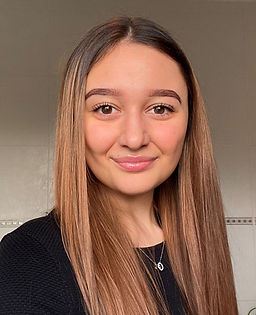
RASTLE LAB
Do same-language subtitles help children learn to read?
In 2021, a campaign claiming that television subtitles were a ‘magic button’ to improve children’s reading was launched in the United Kingdom and quickly went viral. But do children actually learn to read by watching television with same-language subtitles?
Funded by The Nuffield Foundation, this project asked two questions:
1. Where do children look when watching subtitled media?
2. Do subtitles help children improve reading fluency?
We found no evidence that same-language subtitles improve children's reading. Instead, we recommend renewed focus on evidence-based measures to ensure that all children become good readers.
Interested in finding out more? Follow the links to our papers below, and download the project’s Main Public Report.
How to cite the report: Rastle, K., Lopukhina, A., & van Heuven, W. (2025). Do Same-Language Subtitles Help Children Learn to Read
Experiment 1
Where do children look when watching subtitled media?
We used eye-tracking to test whether primary-school children (Years 1–6) actually read same-language subtitles. The results show that children generally need a basic level of reading fluency—reading at about 1 word per second—before they even look at subtitles. In the UK, many children reach this level around Years 2–3, after a few years of instruction.
By contrast, children in our youngest group (end of Year 1) ignored ~60% of subtitles, and ignored most words in the subtitles they did look at. Although these children had all passed the Year 1 phonics screen, they were not able to read quickly enough to follow the subtitles.
The potential impact of same-language subtitles on the youngest readers is limited. Children are unlikely to learn from subtitles if they don’t look at them.
Read the blog for more discussion of results. Also check out the short animation below!


Lopukhina, A., van Heuven, W., Crowley, R., & Rastle, K. (2025). Where do children look when watching videos with same-language subtitles? Psychological Science, 36(4), 223-236. https://doi.org/10.1177/09567976251325789
Experiment 2
Do same-language subtitles help children improve reading fluency?

We conducted a randomised controlled trial to tested whether six weeks of watching television with same-language subtitles improves children’s reading fluency. We found no evidence that six weeks of exposure (averaging ~11 hours per week) produced gains in reading fluency.
Although subtitles did not boost fluency, children in both the subtitles and no-subtitles groups improved over six weeks. This improvement appeared on standard assessments of reading fluency and on eye-movement measures. Such gains were expected, as the children were attending schools providing high-quality reading instruction aligned with the national curriculum.
Meet Our Team

Principal Investigator

Co-Investigator
Postdoctoral Fellow
Advisory Board
Our project is supported by an expert advisory board including
- Janet Vousden (Nottingham Trent University),
- Christina Clark (National Literacy Trust),
- Estelle Bellamy (Fylde Coast Academy Trust),
- Bartolomeo Meletti (Learning on Screen),
- Ashley Woodfall (Children’s Media Foundation),
- Eleanor Ireland (Nuffield Foundation).



